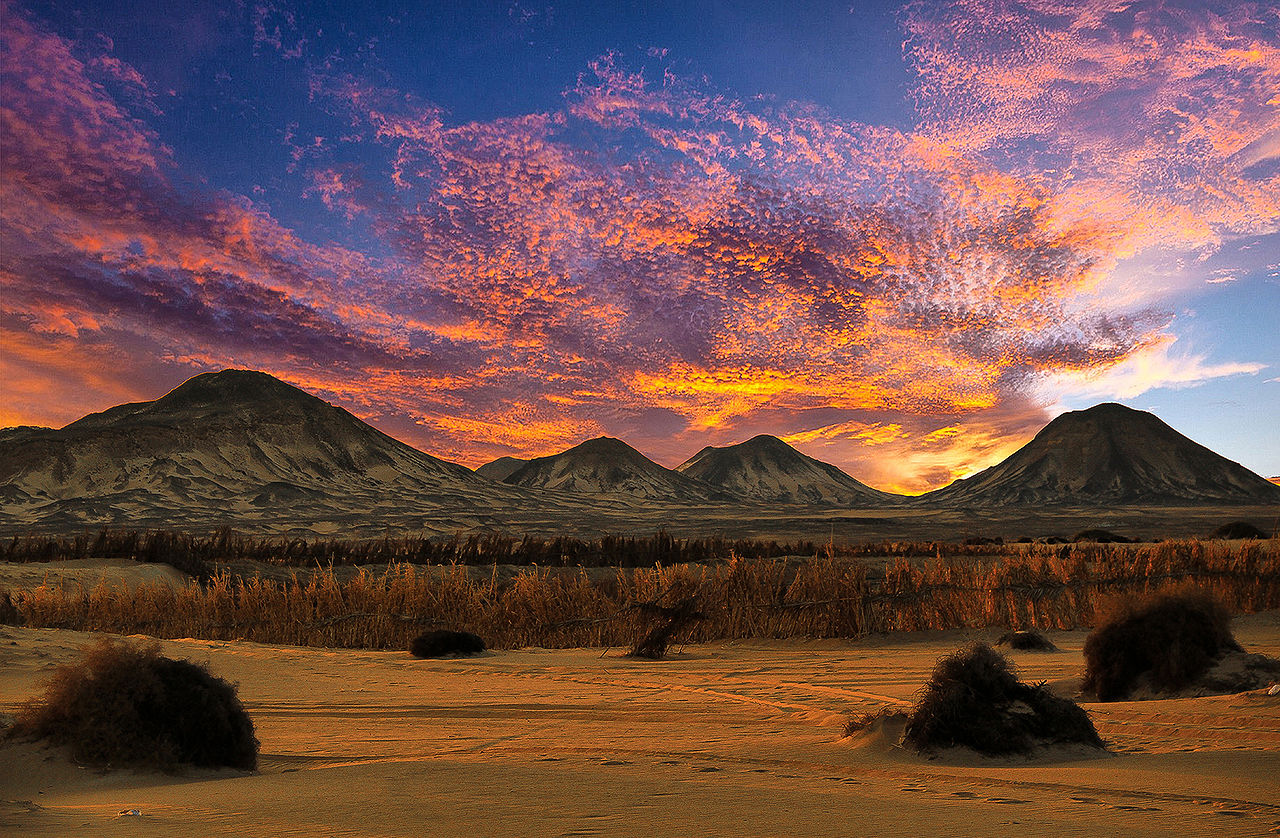Bahariya & Kharijah
The Bedouins of Bahariya and Kharijah describes a collective human nomadic Arabic culture living west of the Nile river and south of the Qattara Depression, in the Egyptian Sahara, characterised by a semi-nomadic way of life. They have adapted to the desert environment and leanred to thrive there, relying on activities such as herding livestock (particularly camels, goats and sheep), hunting and trade. They occupy a region free from attachments to political entities, who could not benefit from the lands that these beduoins occupy.
Contents
Society is organized into tribal and clan structures, each with its distinct customs, traditions, and territories. With a culture reaching back thousands of years, the people are steeped in oral traditions, storytelling, poetry, music and unique desert survival skills. It's guessed that the origin of these tribes reaches perhaps as far back as the Chalcolithic period, when perhaps the Sahara was more fertile and green that in the present game world.
Religion plays a central role in their daily lives, with the majority of Bedouins being devout Muslims. While at times these tribes have warred among themselves, they are primarily distrustful of outsiders — but generous and patient unless they're openly insulted.
Their tribal lands extend over an area of 82 hexes, with a population of 17,102. Nearly all their outside interaction is with the Nile valley under Ottoman authority.
Geography
The Sahara desert is composed of vast stretches of sand dunes, rocky plateaus and extreme aridity. Oasis for water are found in marginally elevated plateaus, where the thin vegetation is nevertheless suitable for grazing. The oases of this region are far from frequented rest stops for traders, who would take routes far to the south. West of Bahariya and Kharijah is the wide Libyan desert, endless and impossible to cross.
Located on the Libyan desert's periphery, the Black desert provides a striking landscape, marked by the presence of dark-colored, volcanic rock formations that stands in stark contrast to the golden sands of the surrounding desert. Arid and inhospitable, the region is loted for it's lack of groundwater and minimal rainfall. The rare grazing areas to be found are known only to the bedouins; outsiders would surely die should they attempt to cross the region.
Settlements
Each of these are built upon an oases, which supports vegetation and serves as a reliable water source for the residents.
| Name | Population | Year founded |
|---|---|---|
| Al Farafirah | 457 | 178 BC |
| Al Kharijah | 1,945 | 94 |
| Bawit | 312 | 402 |
| Harra | 1,285 | 63 BC |
| Mut | 292 | 481 |
